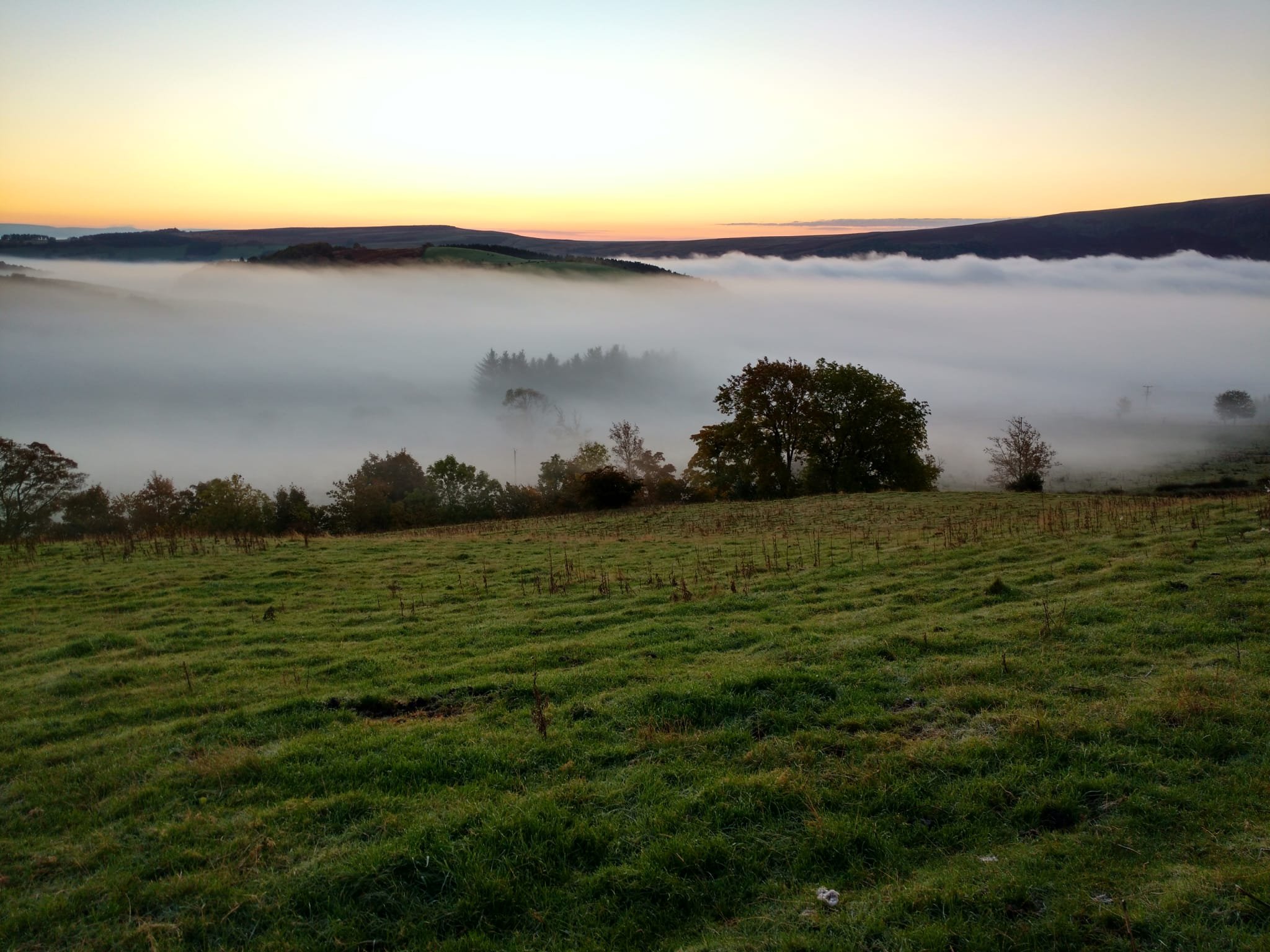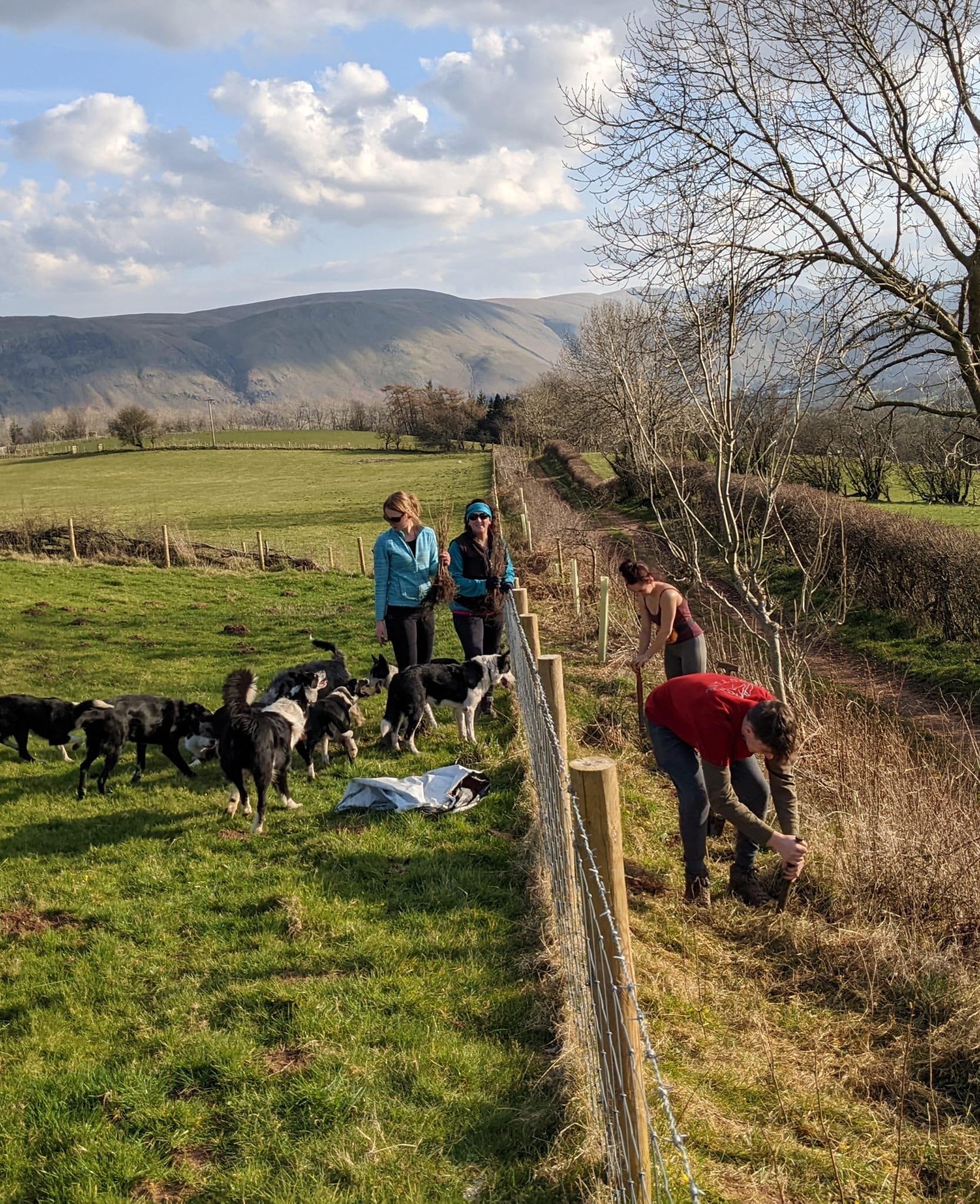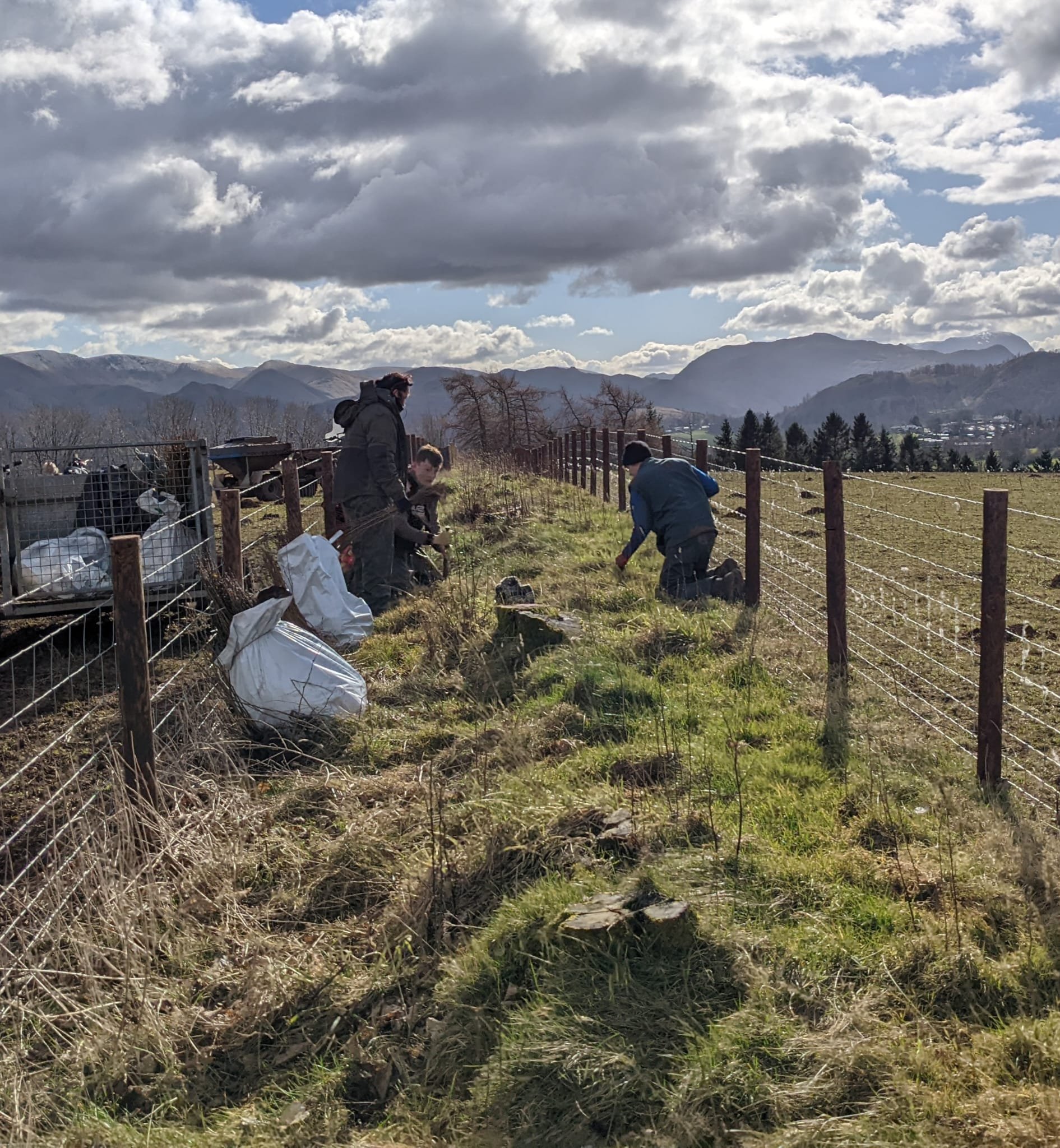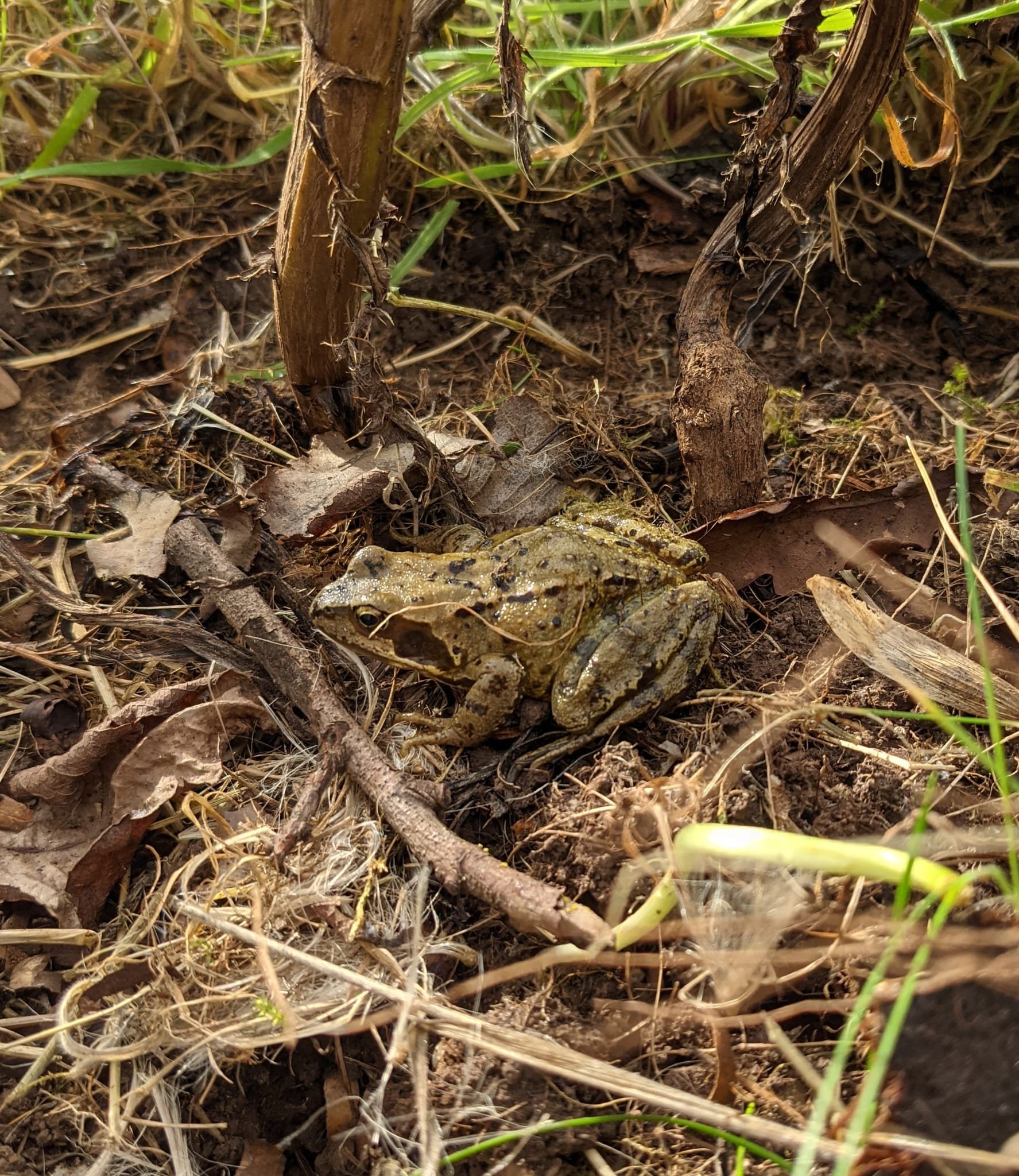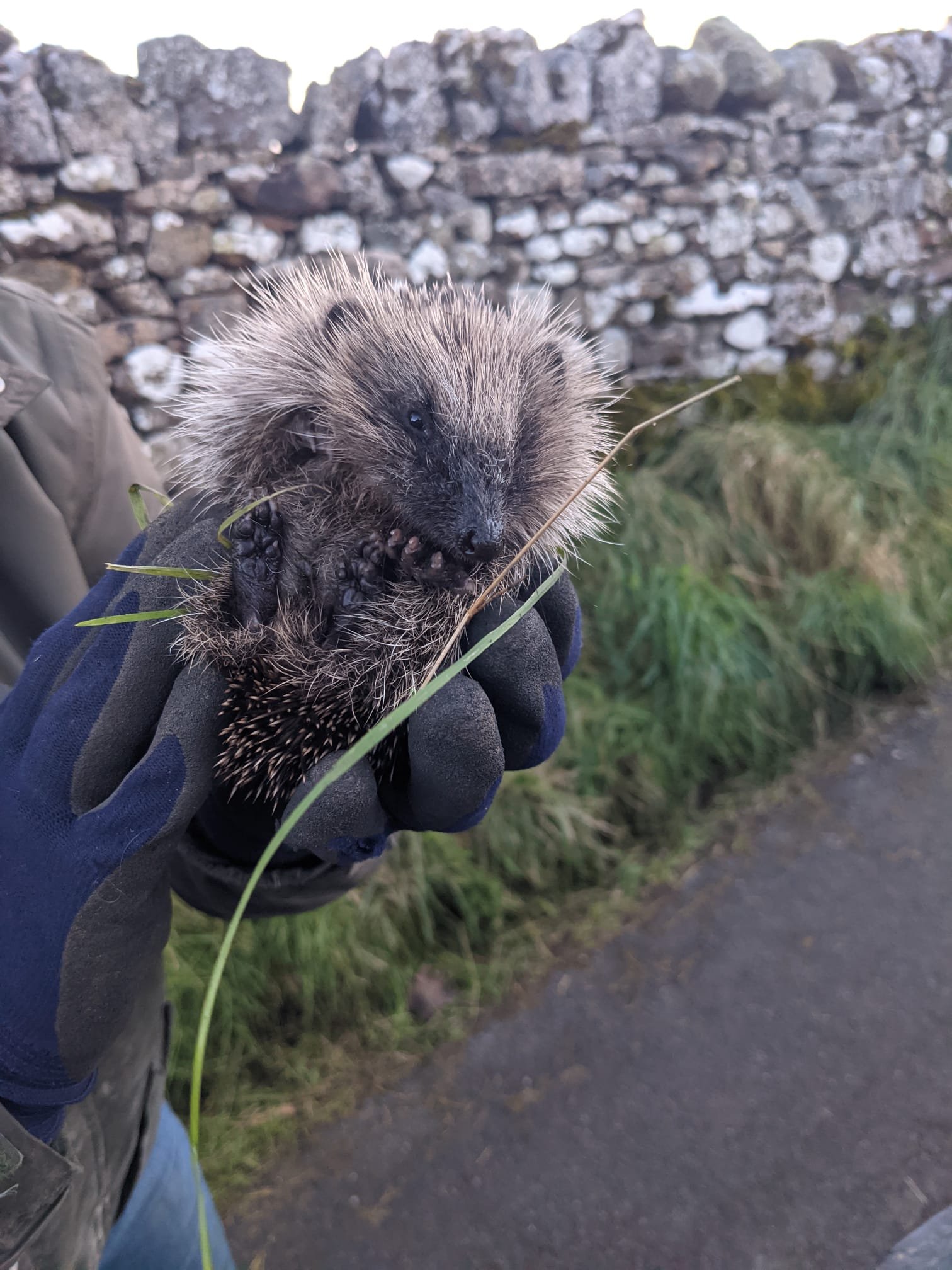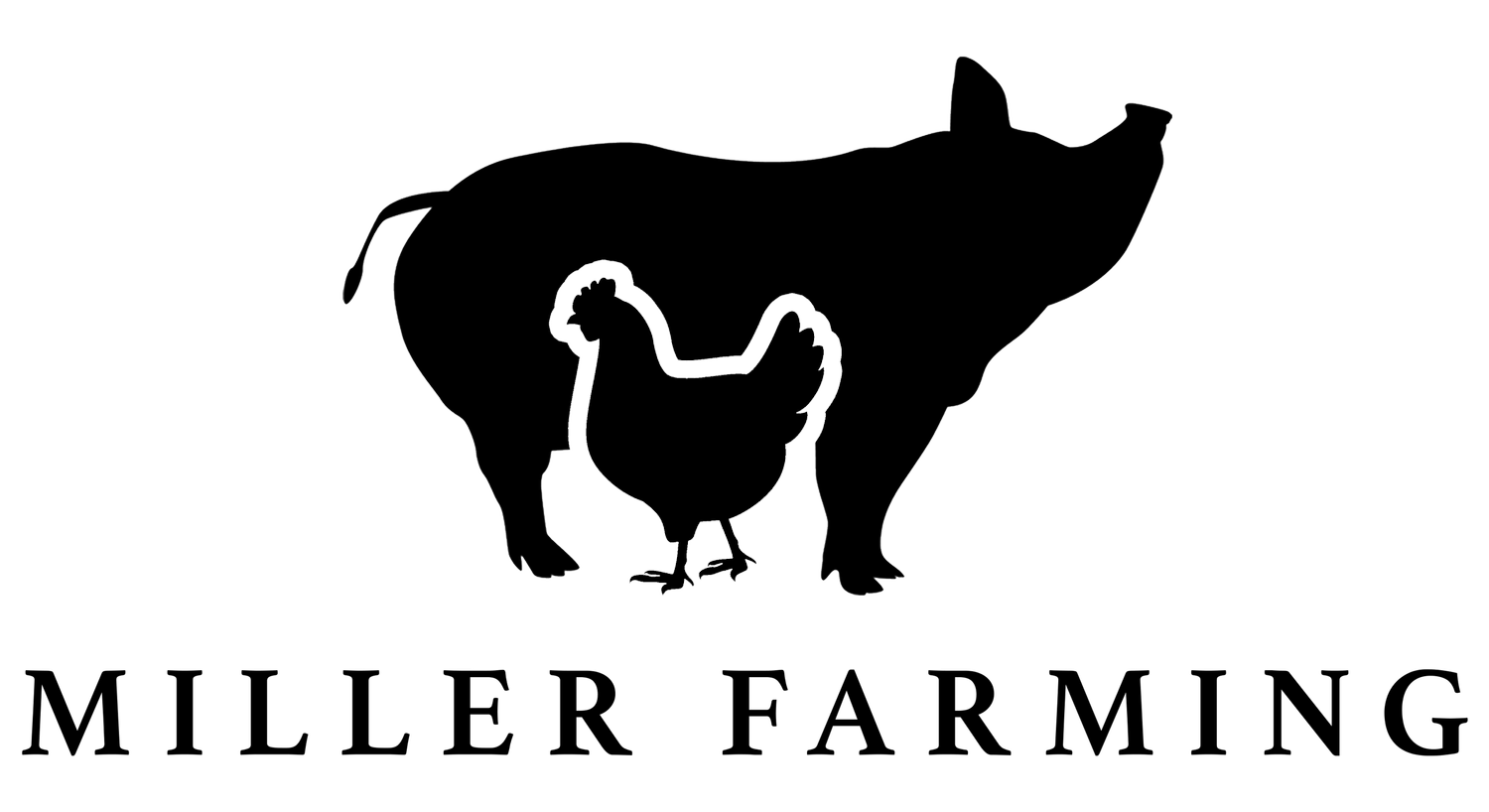
Our farm is located at Penruddock and land is farmed in Penruddock and Hutton parish and at Bennethead, near to Ullswater.
How we care for the environment.
Farming in an environmentally sensitive way has always been a high priority to us and we have made many improvements to the biodiversity and wildlife habitats on the farm over the past twenty five years. In the past we have been in Environmentally Sensitive Area and Countryside Stewardship schemes. We have planted new hedges, laid existing hedges and planted areas of trees with the help of these schemes but also have done some without funding. This has resulted in a more diverse habitat on the farm and along with a more holistic approach to the grazing of our sheep and cattle has led to a vast increase of species on our land.
Our farm at Penruddock is an upland farm, meaning it is higher in elevation and therefore gets colder weather. When we started farming here there were a lot of wire fences and not so many trees. The hedges were old and in need of restoration and most of them weren’t fenced off so were getting grazed by the animals. We felt that we needed to make more room for birds and other wildlife so we joined the countryside stewardship scheme. Through the support they provide we were able to fence off and lay hedges, split some fields up, plant new hedges, designate some areas just for trees, as well as starting to use less fertiliser on our fields.
We now have lots of good hedges on the farm which has led to an increase in wildlife, from insects and pollinators such as bumblebees and butterflies to birds, animals, wildflowers and even frogs and toads.
Each year we are seeing more birds nesting and raising chicks on the farm. We now see birds such as sparrow-hawks, kestrels and barn owls that we didn't used to, we get red squirrels and hedgehogs along our hedges, rabbits and hares in the fields, and we also have more areas of rough grass and flowers that are good for mice, voles and shrews as well as insects such as beetles and moths.
We are trying to reduce overgrazing by practising mob grazing. This management strategy gives fields longer to rest, allowing grasses and flowers to get pollinated and seed, as well as build better root systems. This enables the land to be more resilient to water-logging and droughts. This regenerative way of grazing also increases the amount of organic matter within the soil, as well as its fertility, which helps sequester carbon and improve the microbial health and balance.






